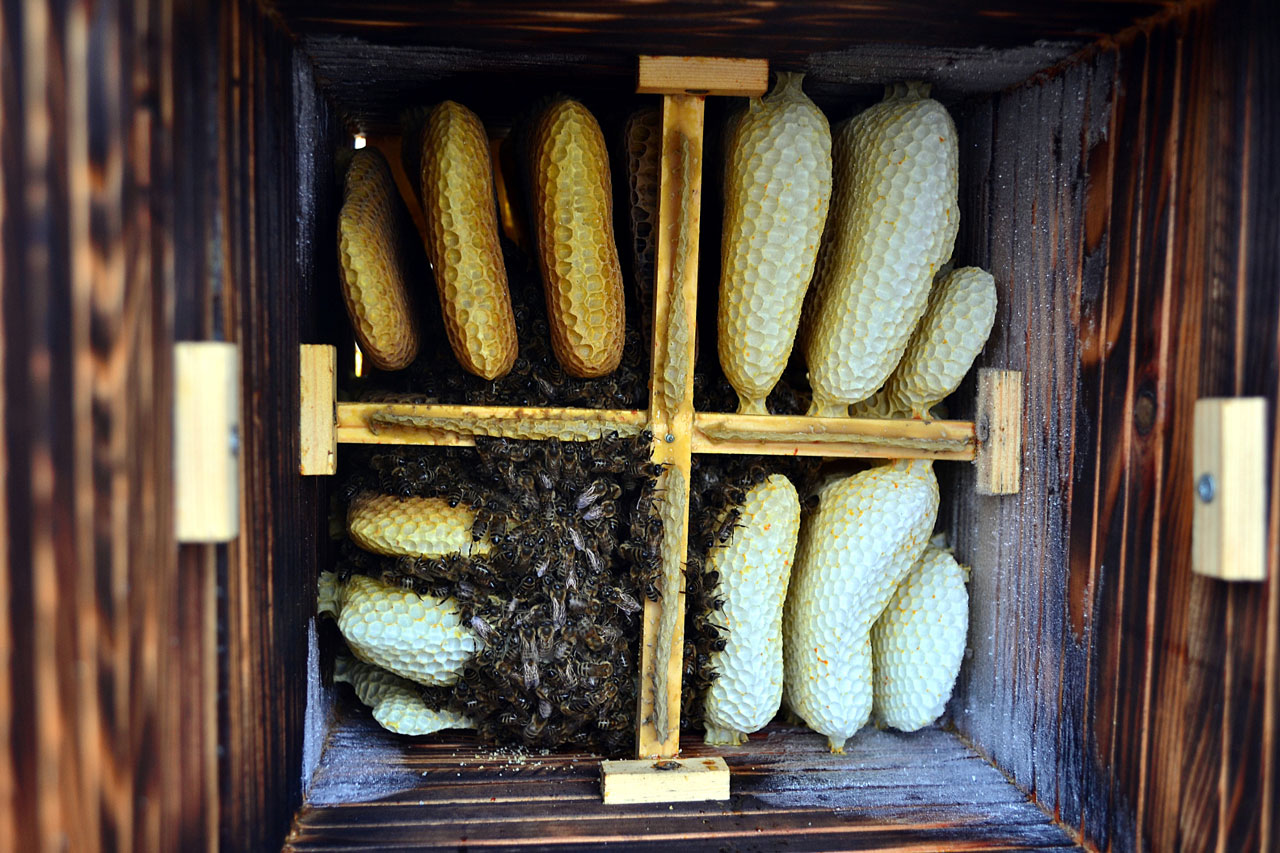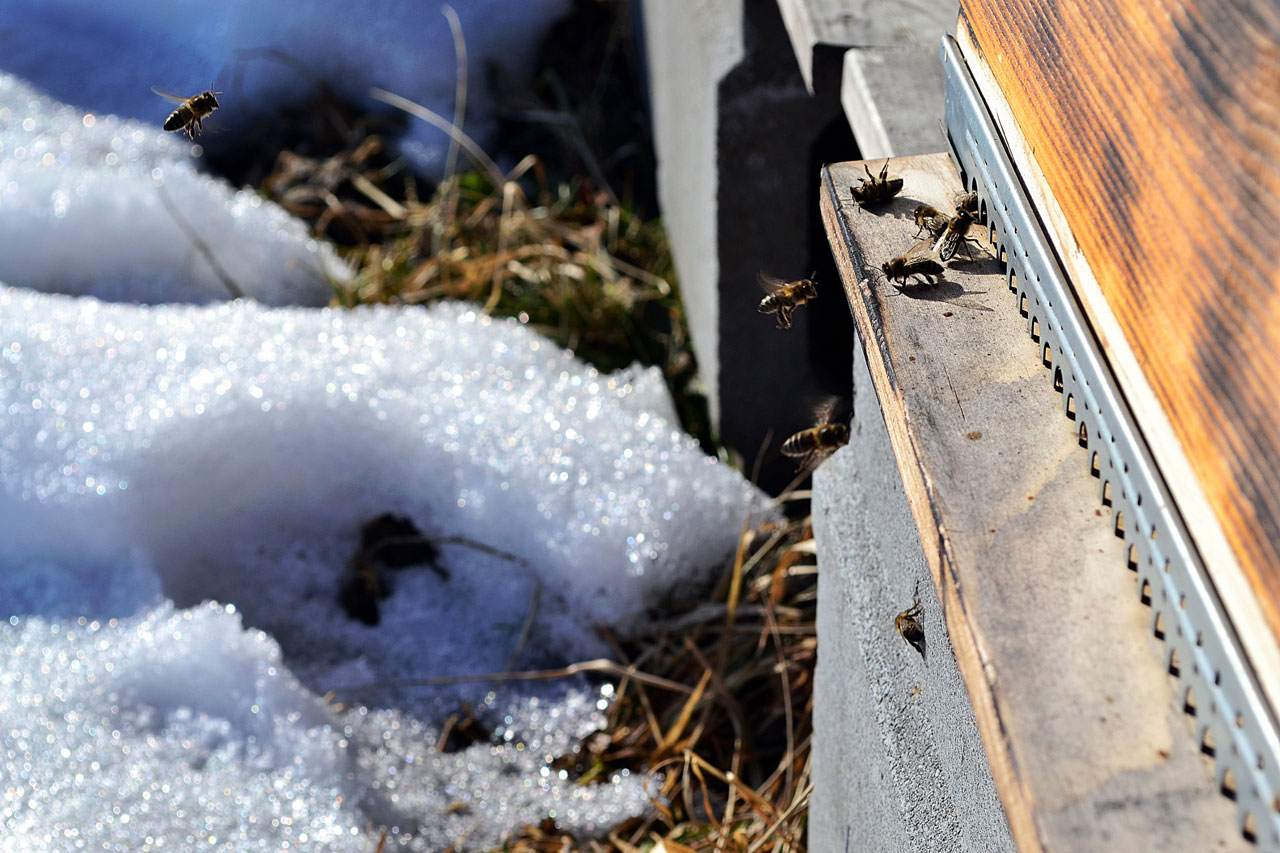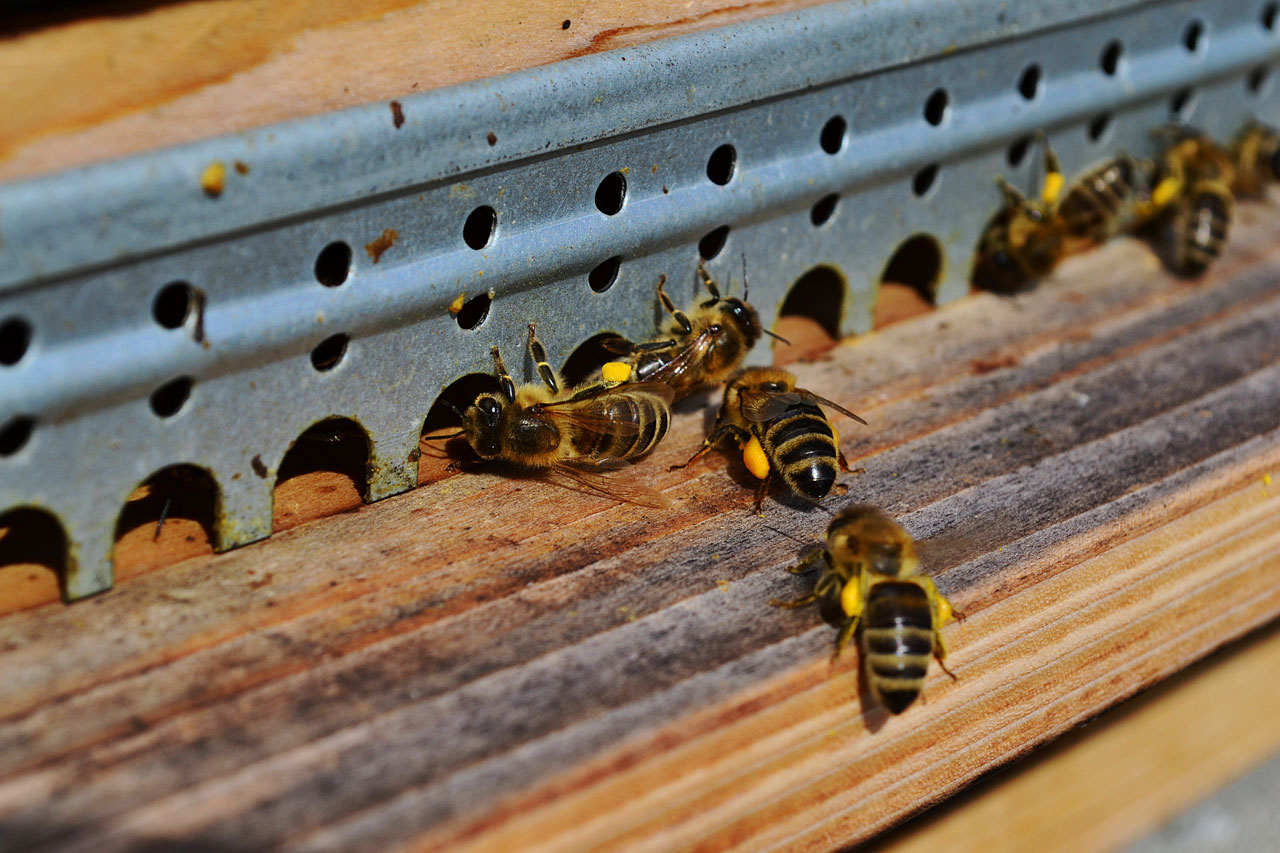Jarné neprebúdzanie
Spring has already crossed the threshold of winter and someone is still not awake. It is not surprising, since bees have worked hard all winter to preserve the continuity of life.
Bees will pop up from the divine darkness as soon as it gets a bit warmer so they can fly around and clean the bottom of the hive and the bottom board. It was in February this year when it was nice and sunny during the day and rather freezing cold at night. Unless reasonable, we do not disturb the hive of bees. It is good enough to listen with one’s ear on the bottom board and the intensity of buzzing tells us whether things inside the hive are the way they should be. I used to do it also when it was freezing cold in January and believe me no sound is more beautiful than this in such an inhospitable winter month, apart from the Eurasian dipper singing on the frozen streams, standing on the bank and diving to catch its food.

Let’s have a closer look into how the bees survives the winter time, how the bee keeper prepared the bees after the last harvesting so that the bees are not hungry, have enough stores, are vital and are not weakened because of pathogen and insensitive handling. Last harvesting before the winter should be mainly ethical and not economical. It is necessary for the bees to survive the winter also with their own honey and not only with food provided by the beekeeper. It is one of the main factors which causes that the bees left during the winter without their own honey are made weak. The only exception is the honeydew honey which is not suitable for winter period and it is recommended to harvest it. We need to realize that honey and other direct products (pollen, propolis, wax) are not the main benefit of beekeeping. The main benefit is that the bees pollinate majority of cultural plants lack of which would cause problems concerning growing of such plants. Ethical beekeeping has been enhanced also in our country and the honey is not the main product. The contribution of bees is considerably higher in comparison to net production of honey.
Let’s go back to winter time. There is a so called “winter generation” of bees born for that period, ensuring that the bees survive through the winter. Those are the bees that live longer than the summer bees, they are born in September and live up to 8 months. Summer bees live just 4 to 6 weeks because of their hard work during collecting. Temperature drops down in the winter and bees form a winter cluster, with temperature of 15 to 30 °C. The temperature may not drop below 10 °C on the sides. Thermoregulation is a unique feature in the world of insects, making the bees, and people as well, independent from climate changes due to honey store. A bee produces metabolic warmth in the area of chest; it can produce temperature of 42°C. The bees handle warmth efficiently; it is used not only for the larvae development, it is also used as an instrument to build honeycomb or as a weapon against intruders. It especially protects the queen mother and a whole colony of sisters in the winter. The winter cluster settles on the place where the larvae body was last located and it moves across the honeycomb depending on the food store.

When it gets a bit warmer at the beginning of March and bees are active in the hive, they bring pollen and water which signifies that the queen mother lays larvae, everything is the way it should be and preparations for the spring period are in full swing. At the turn of March and April, the winter generation starts to slow down and it is replaced by spring generation with bees which live shorter. It is a turning point for a beekeeper as he needs to ensure that the bees have everything to start this critical period. A beekeeper eliminates interventions into the beehive and inspects it for the first time only if the temperature in shadow reaches around 15°C or if one can move around with a shirt on. Activity of bees at the beginning of spring will tell us whether the bees are vital and in what shape the queen mother is. This is how the bee year starts…
Martin Hrehorčák

